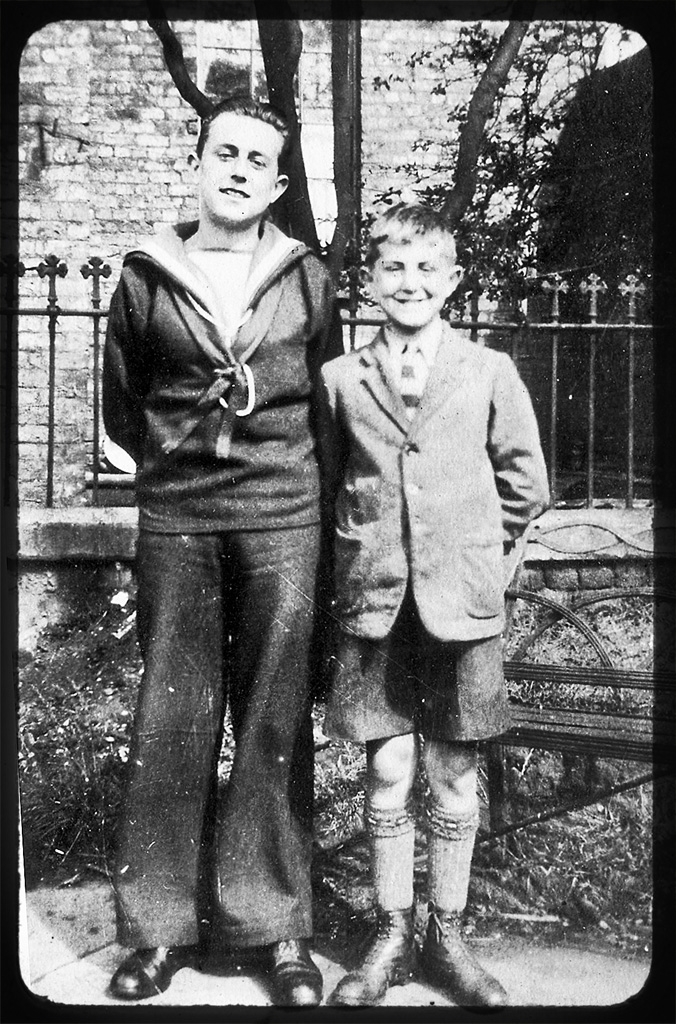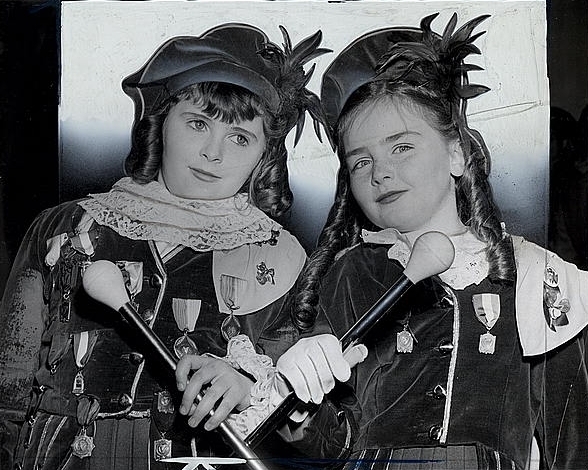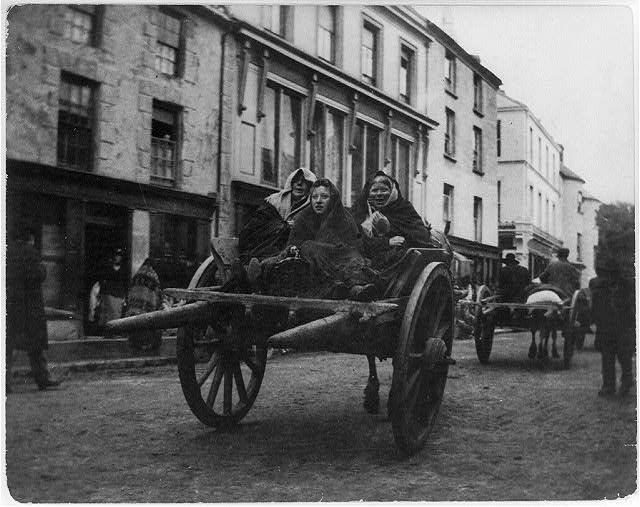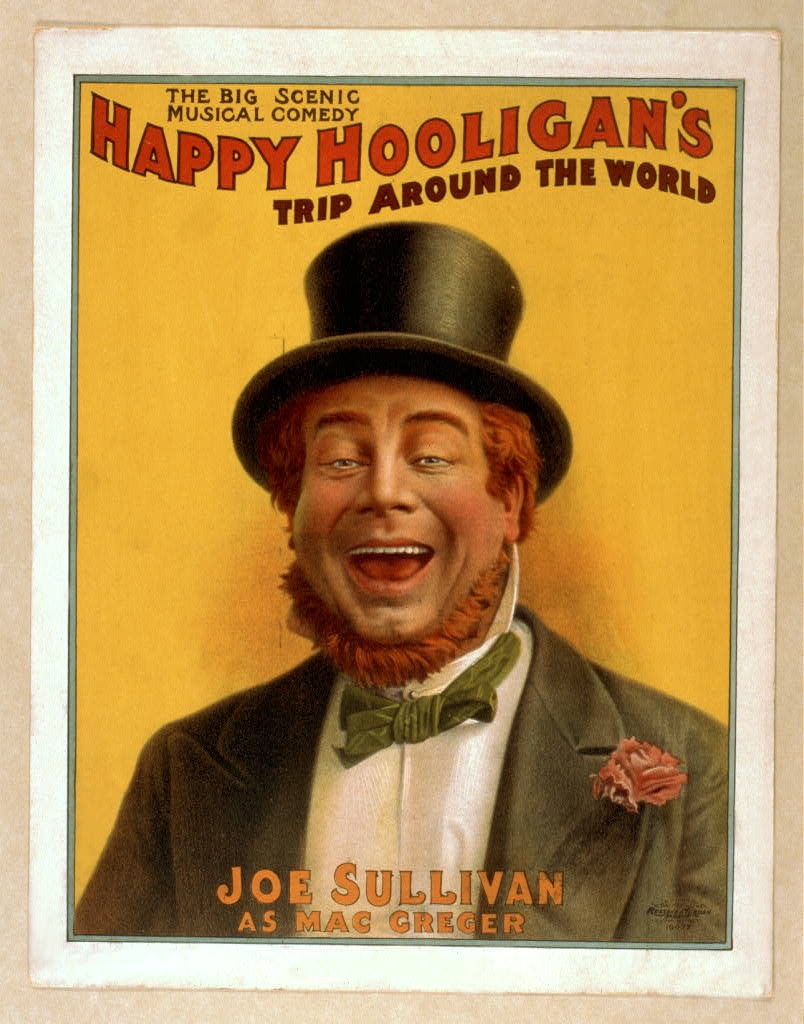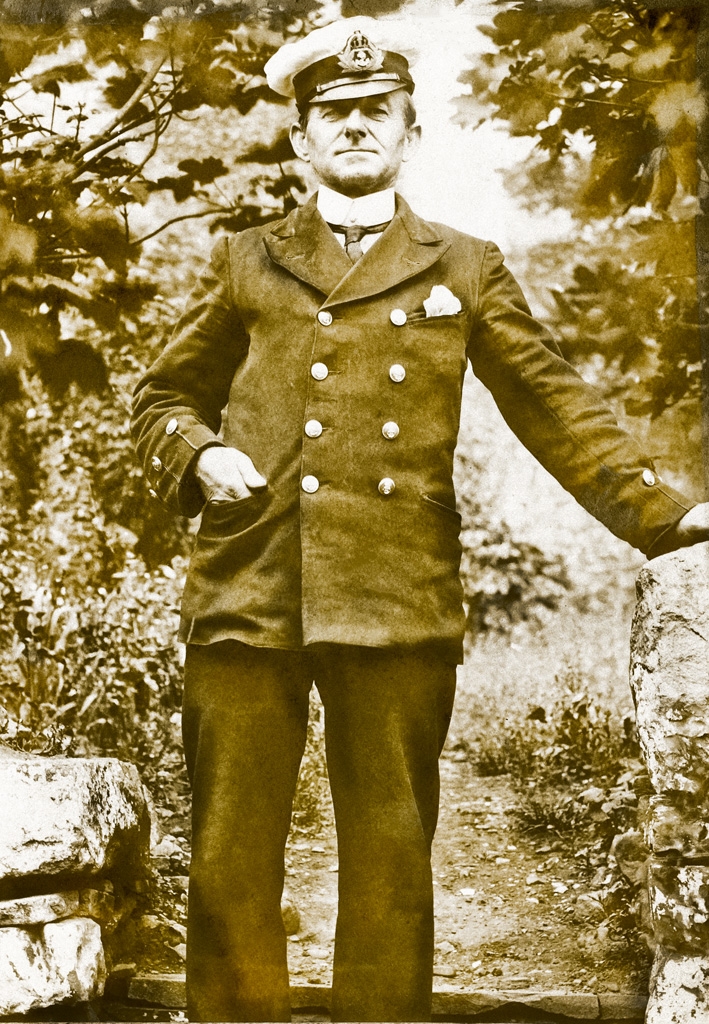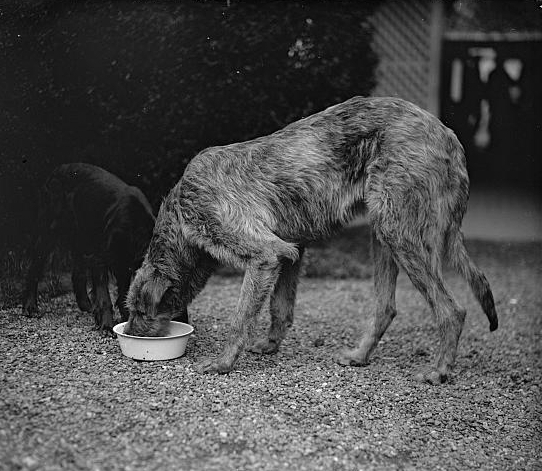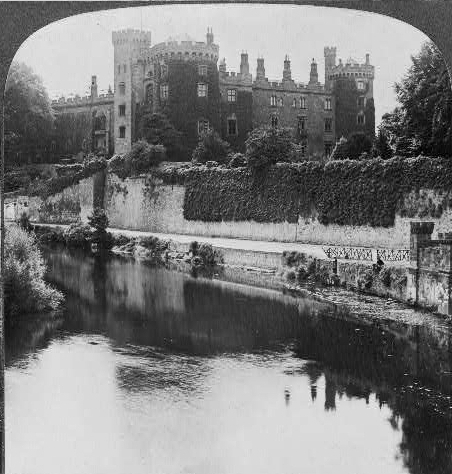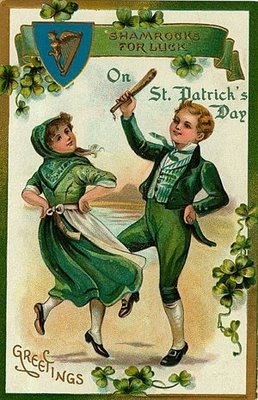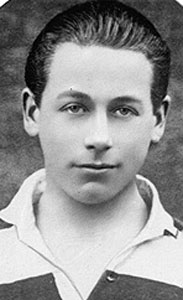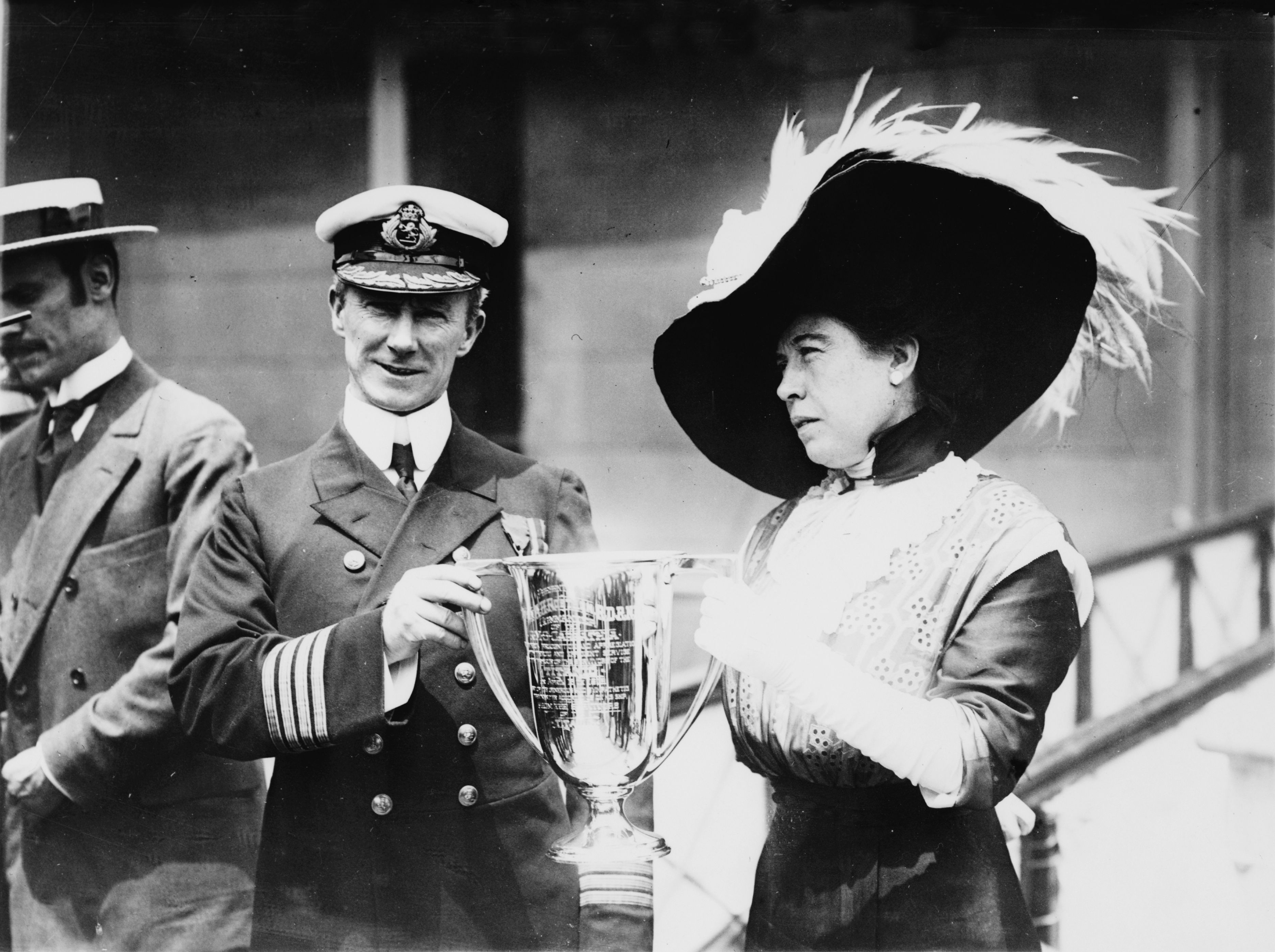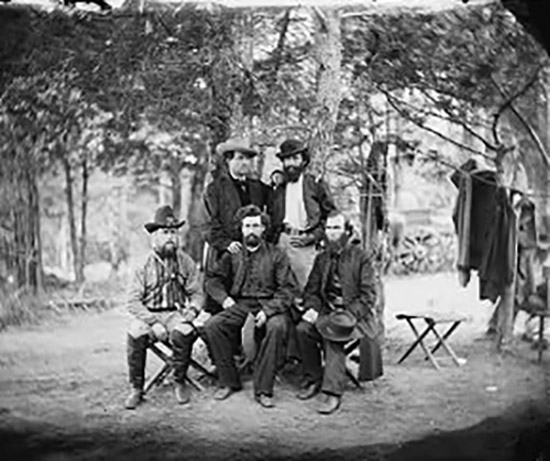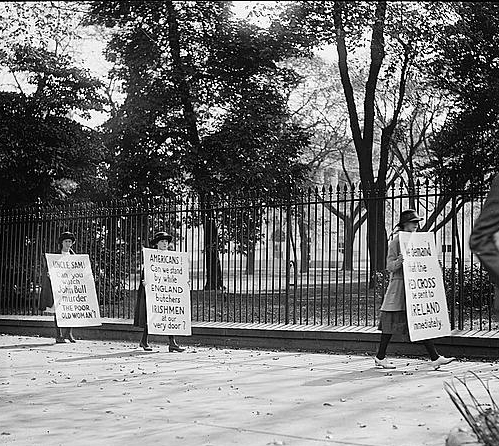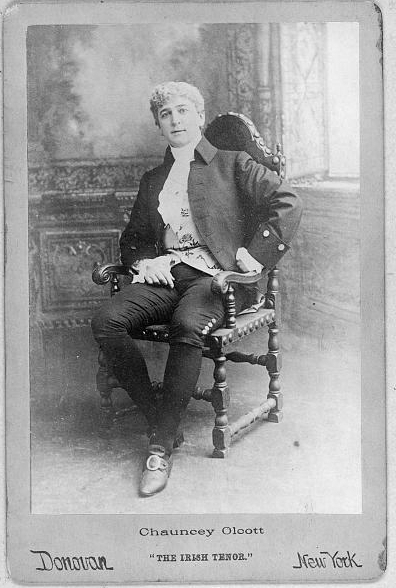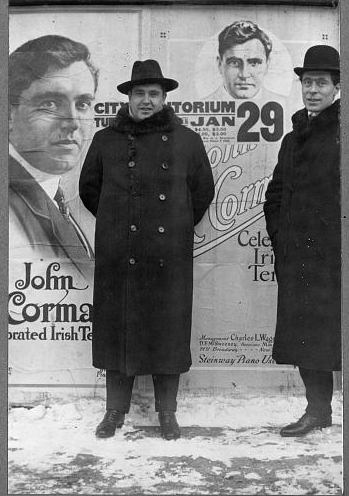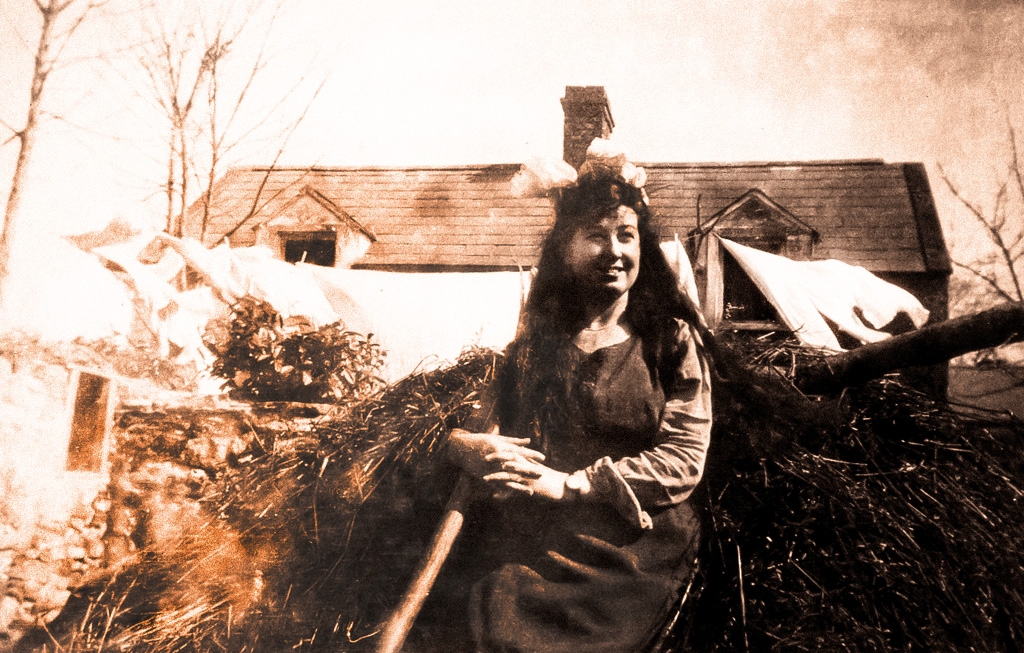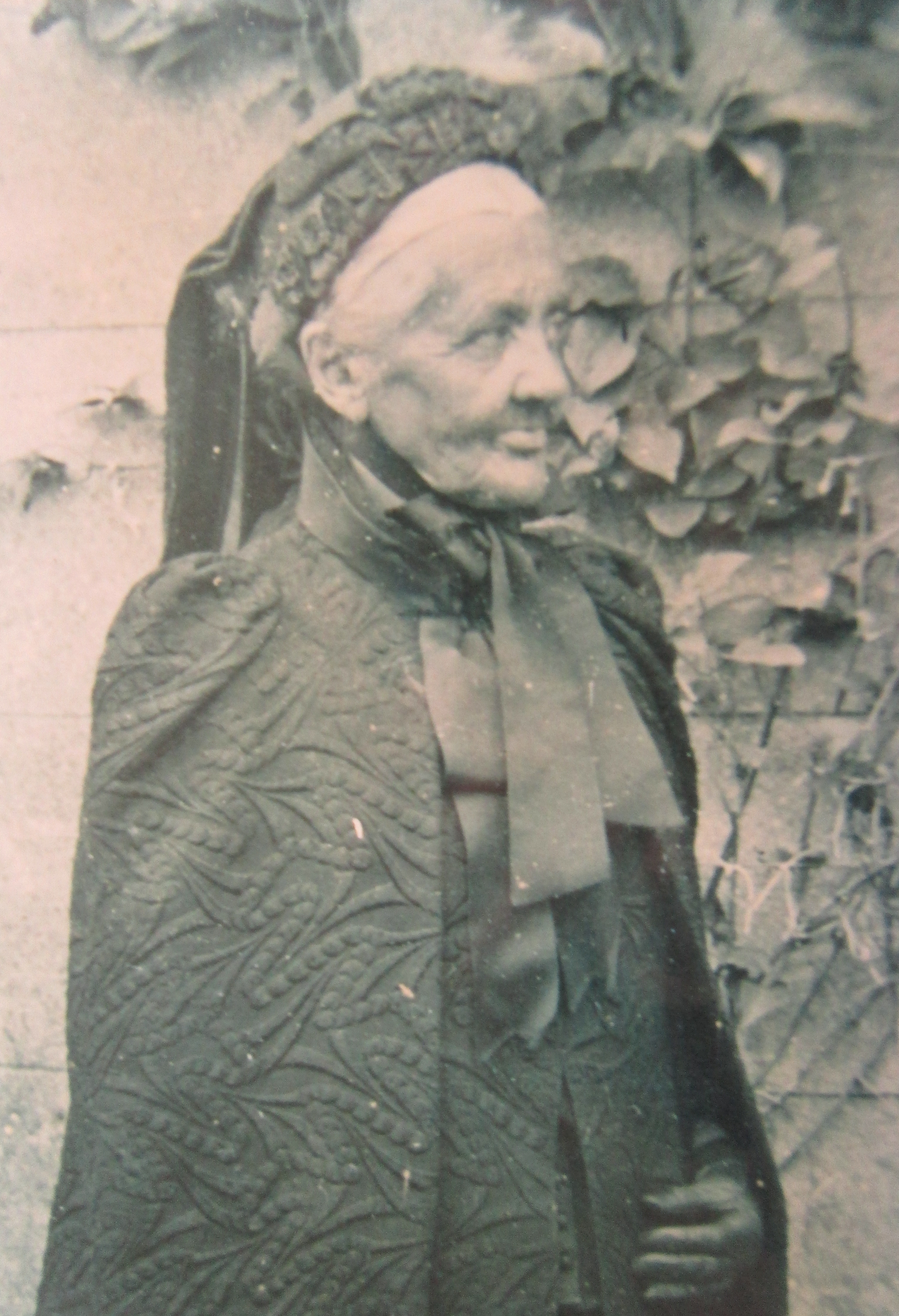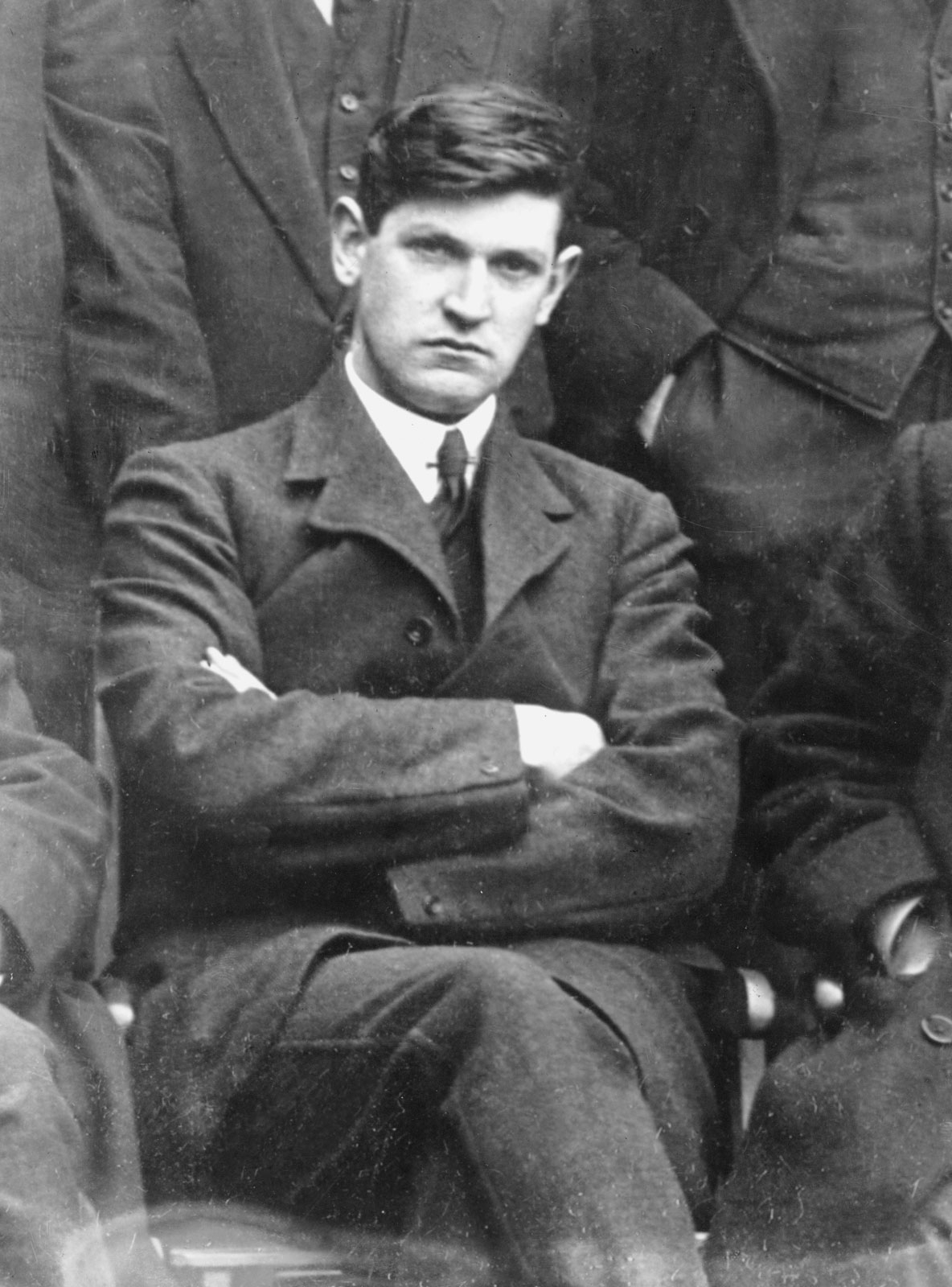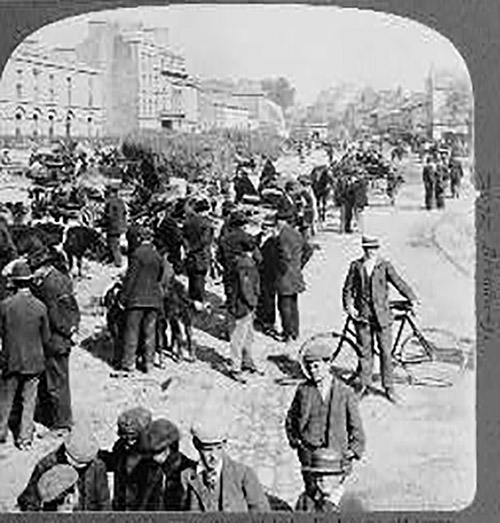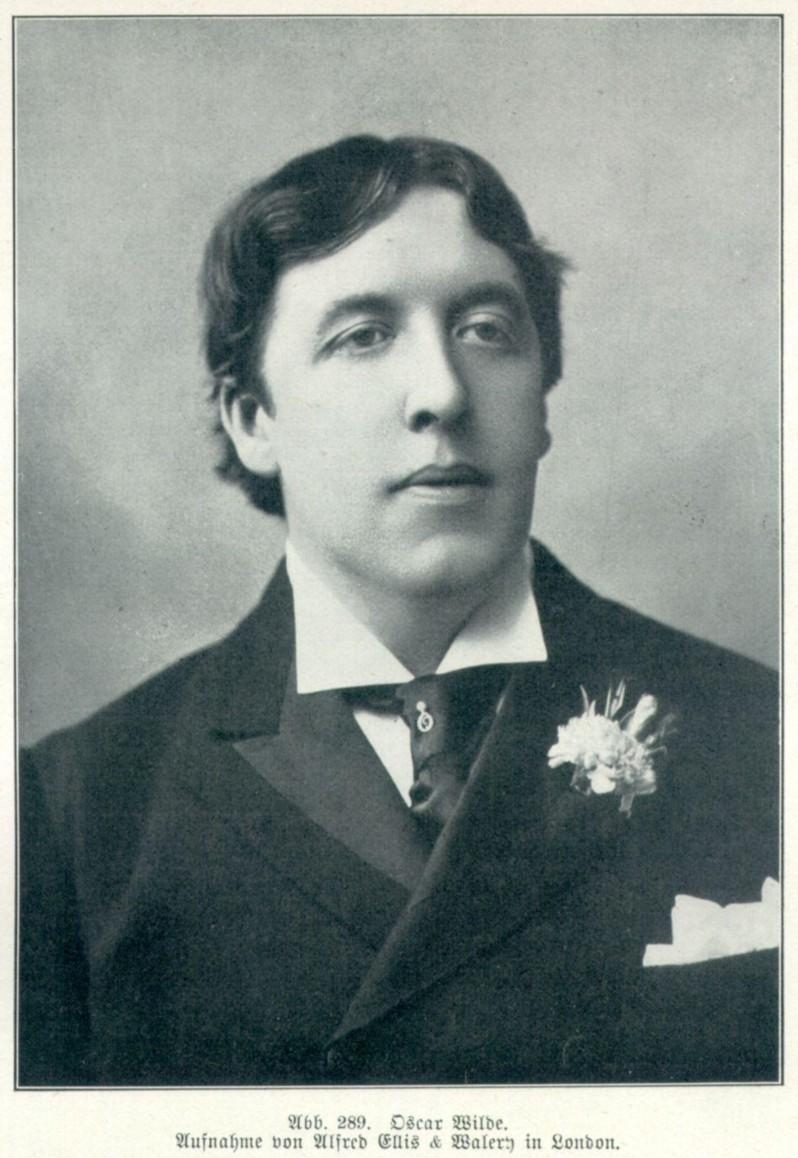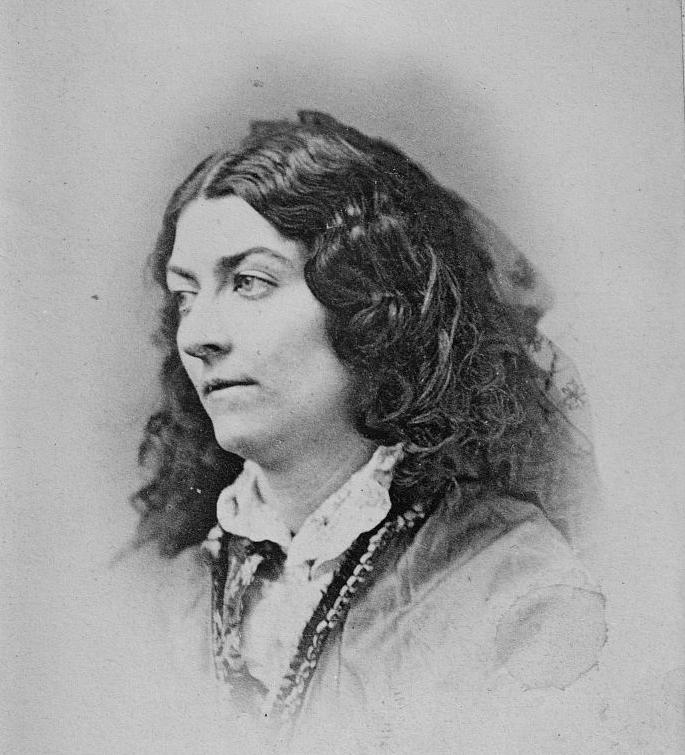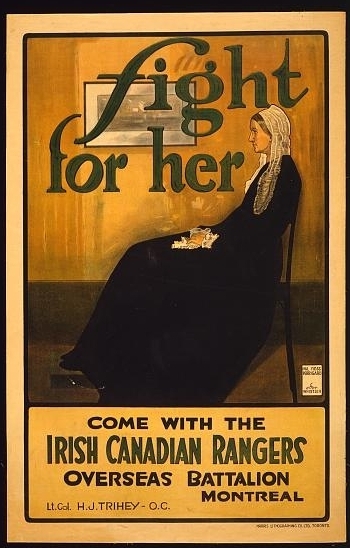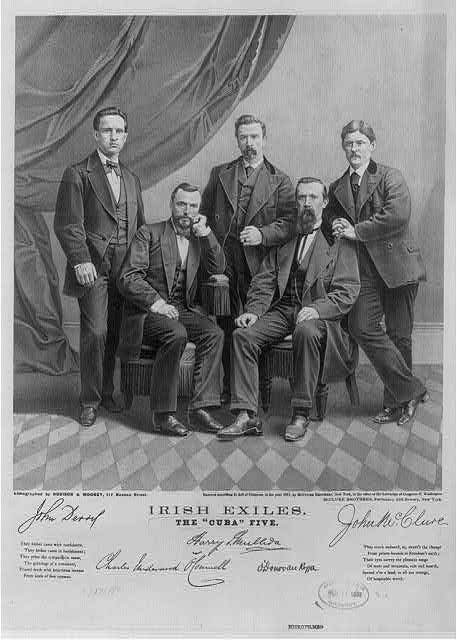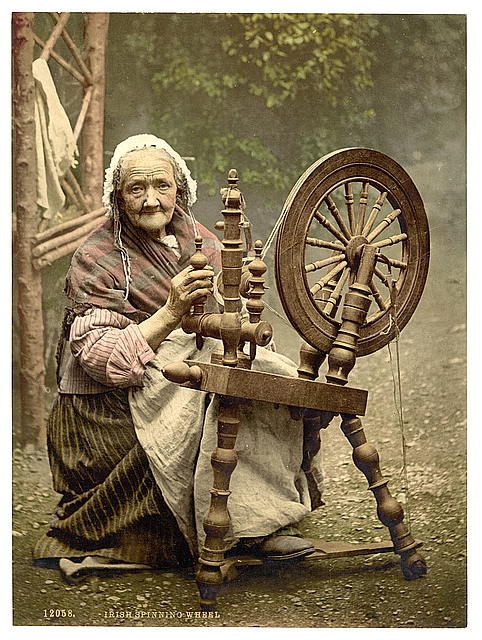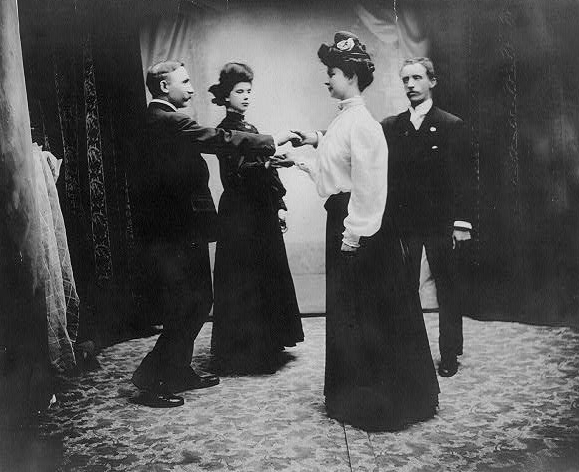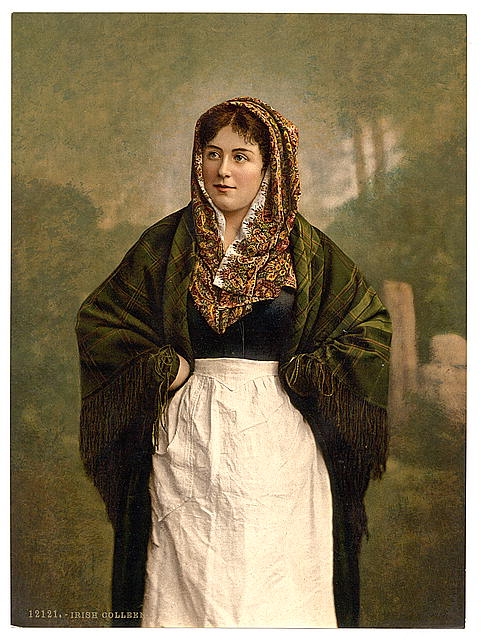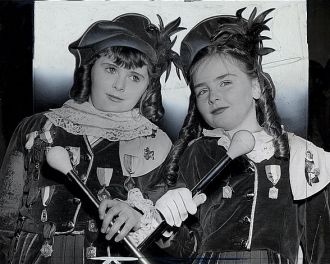
The Pilcher Brothers
 Cathie Allen
Cathie Allen A couple of Irish lads in 1920 Cork County
Two “lassies” in Bob Barrett's Pipers and Drummers
 AncientFaces
AncientFaces Killarney, 1899
 AncientFaces
AncientFaces Three Irish women traveling to a funeral.
"Happy Hooligan's Trip Around the World"
 AncientFaces
AncientFaces A 1907 Broadway show.
A strong tradition of Irish sailors
 Cathie Allen
Cathie Allen Irish Coast Guard, 1916.
Hunting and fighting with these beautiful dogs
 AncientFaces
AncientFaces The Irish wolfhound may have been brought to Ireland as early as 7000 BC. They were originally war hounds and later became used for wolf hunting.
Kilkenny Castle, Ireland
 AncientFaces
AncientFaces Oh! Irish castles are so haunting!
It's a shillelagh (sail éille), not a club
 Daniel Pinna
Daniel Pinna Vintage St. Pat's Day postcard - shamrocks for luck, a shillelagh symbolizing Ireland.
Caoimhín de Barra, Irish freedom fighter
 Kevin Barry
Kevin Barry Kevin Barry (born Caoimhín de Barra, here in 1920 just before he died) was the first Irish republican to be executed by the British since the leaders of the Easter Rising (in 1916 - just over 100 yrs ago) were killed by a firing squad.
Molly Brown didn't need Irish red hair to be feisty.
 Daniel Pinna
Daniel Pinna The unsinkable Molly Brown (born Margaret Tobin to Irish immigrant parents and known as "Maggie" during her lifetime) receiving an award for her heroic actions during the sinking of the Titanic.
World War I war hero
 AncientFaces
AncientFaces Michael O'Leary was awarded the Victoria Cross for heroism in World War 1. He was lauded for "single-handedly charging and destroying two German barricades defended by machine gun positions" near the French village of Cuinchy.
Fighting for the Union -faugh a ballagh!
 AncientFaces
AncientFaces In the American Civil War, the Irish Brigade was predominantly made up of Irish-Americans and fought on the side of the Union. Their battle cry was "faugh a ballagh" - clear the way.
We will be heard!
 AncientFaces
AncientFaces Irish protesters at the White House, 1920. Signs read "Americans: Can we stand by while England butchers Irishmen at our very door?" and "Uncle Sam: Can you watch John Bull murder the poor old woman?"
The Irish are known for their singing
 AncientFaces
AncientFaces First generation Irish American and famous Irish tenor, Chauncey Olcott in 1902.
Born in Ireland, singing in America
 AncientFaces
AncientFaces John McCormack in 1918, another famous Irish-American tenor.
Beautiful Irish colleen
 Cathie Allen
Cathie Allen She lived to be 100. Here she is in 1917 County Cork.
Colleens grow up but are still beautiful
Mary Edwards, who died in 1914 in Ireland.
Does he look like Liam Neeson?
 Daniel Pinna
Daniel Pinna Michael Collins, famous fighter for Irish rights. Liam Neeson played him in the 1996 film.
Leprechauns don't have to be small?
 Daniel Pinna
Daniel Pinna St Patrick's Day Parade "Leprechaun".
A turn of the century gathering of stylish Irishmen
 AncientFaces
AncientFaces Galway in 1903.
Imprisoned for his sexuality
 Kathy Pinna
Kathy Pinna Oscar Wilde (Oscar Fingal O'Flahertie Wills Wilde), Irish poet who also wrote "The Picture of Dorian Gray". One of his famous epigrams: "I can resist anything but temptation."
Courtesan to King Ludwig I of Bavaria
 Kathy Pinna
Kathy Pinna Lola Montez, born Eliza Rosanna Gilbert in Ireland, later moved to America where she became a famous entertainer.
Fight for her! 1915
 AncientFaces
AncientFaces A World War 1 Canadian recruitment poster appealing to Irish-Canadians.
The famous (or infamous) Irish 5
 AncientFaces
AncientFaces Irish freedom fighters who were captured in Ireland and sent to Cuba in 1871, then sent on to America.
May every good fortune, success and blessing . . .
 AncientFaces
AncientFaces British recruitment poster urging Irishmen to fight for the UK in World War 1.
Making thread or yarn?
 AncientFaces
AncientFaces Irish spinner in the late 1800's, County Galway.
Monaghan Men's Irish Dancing Class
 AncientFaces
AncientFaces Not Irish step dancing, this is a reel.
A depiction of an Irish beauty
 AncientFaces
AncientFaces Irish Colleen circa the 1890's.
An interesting custom At the end of the night, an old custom is the "drowning of the shamrock". A shamrock is placed at the bottom of a glass, the glass is filled with whiskey, beer, or cider, and then St. Patrick is toasted. After drinking the contents of the cup, the shamrock is swallowed or tossed over your shoulder for good luck.
The History of St. Patrick's Day In Ireland, St. Patrick's Day is called Lá Fhéile Pádraig, "the Day of the Festival of Patrick" and is named after Saint Patrick, the patron saint of Ireland. St. Patrick was born about AD 385 and died in 461 on March 17th. He is credited with bringing Christianity to Ireland - or "chasing the snakes out of Ireland", referring to the eradication of pagan religion on the island. (There were never any snakes in Ireland). Ironically, Patrick wasn't Irish - he was born in Great Britain and kidnapped by Irish raiders at age 16 and taken to Ireland - at least that's the story that he wrote in his autobiography, "Declaration". After 6 years in Ireland, "God saved him" - returning him to Great Britain - and he became a priest, later returning to Ireland to save the pagans, converting "thousands" to the Catholic/Christian religion.
In the centuries after his death, legends grew up around him and he became more revered; and until a few decades ago, he was celebrated more by the Irish diaspora - about 50 to 80 million Irish people outside of Ireland - than among the inhabitants of Ireland. St. Patrick's Day became a public celebration - festivals, parades, banquets, wearing green, playing Irish music - rather than a church holy day. Even church restrictions during Lent are now suspended for St. Patrick's Day. Dispensation is given for eating meat - especially corn beef! - and drinking alcohol.
Have photos that you'd like to see included? Share your photos or discover photos of strikes and protests (some are Irish - the Irish are not a shy and retiring people) on the next page.

